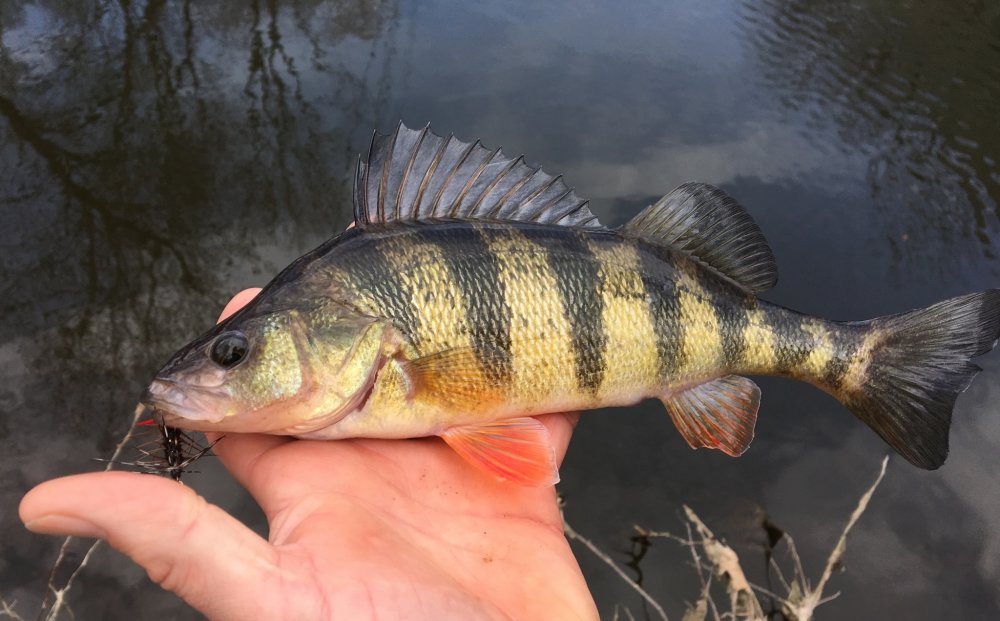Sunfish & Crappie
Bluegill Sunfish
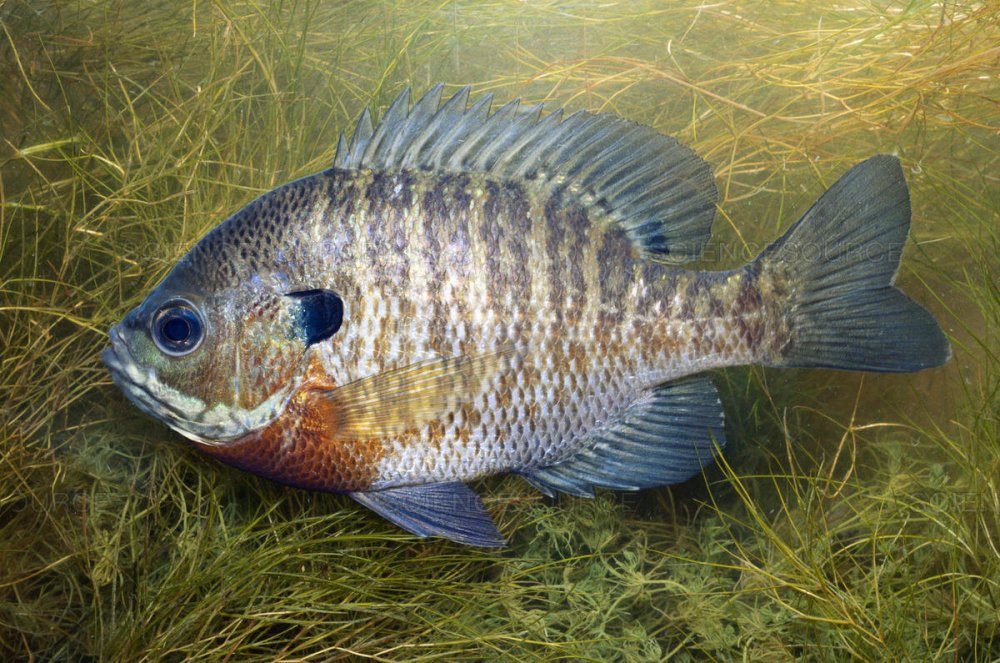
There is scarcely a body of water in the state that does not have Bluegills in it. Bluegills get to a foot long, but are seldom seen at that size.
All sunfishes are aggressive and territorial. Their belligerence is heightened in the confines of an aquarium, where you may start out with several small ones, but you will end up with just one big one. A sunfish will tear a fish-store cichlid to pieces. They adapt readily to regular fish food, but lose most of the attractive wild colors.
Pumpkinseed Sunfish
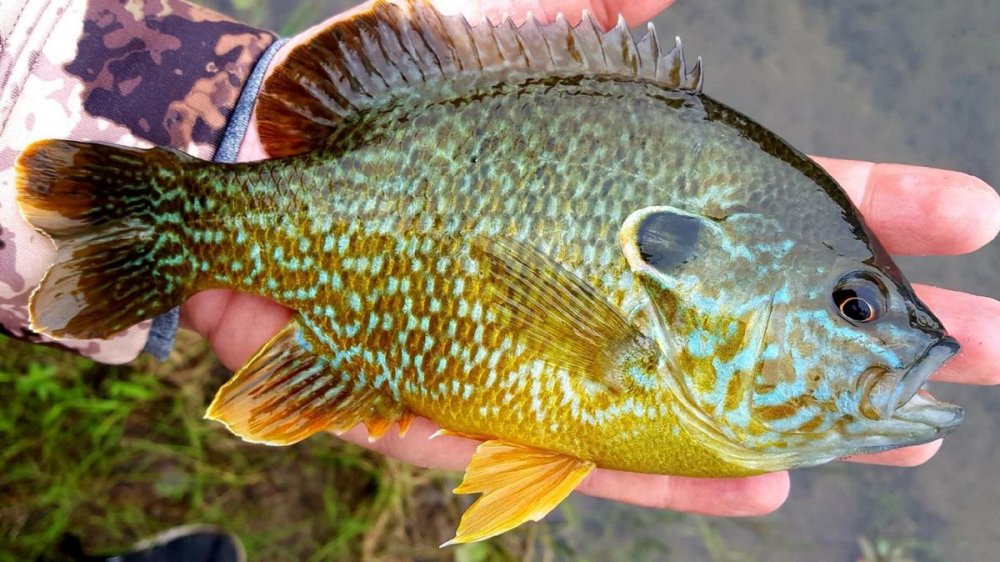
The Pumpkinseed is the second most common type of sunfish
— Wikipedia
Redbreast Sunfish
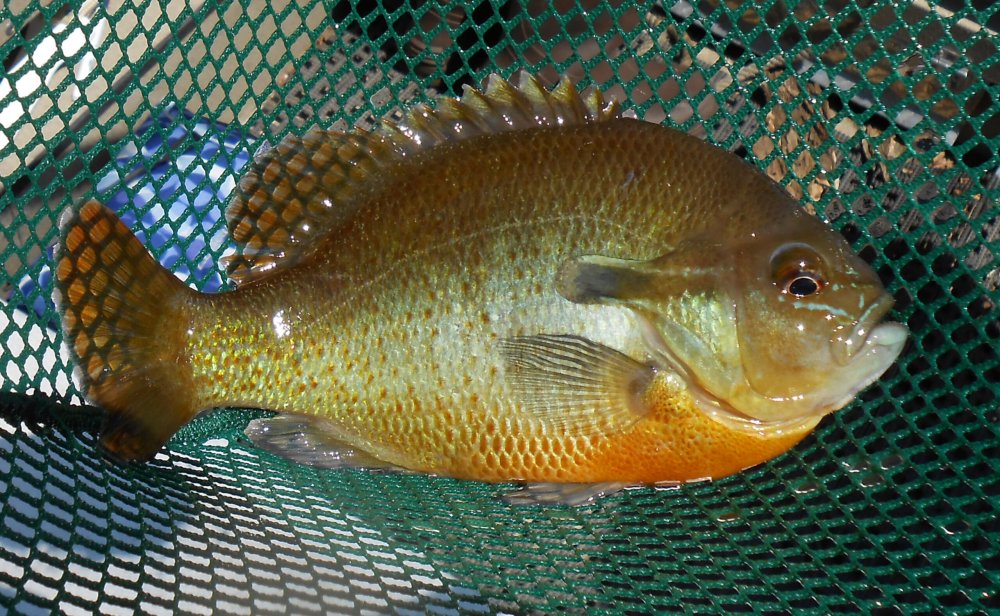
Redbreasts can be found in the D&R Canal.
Black Crappie
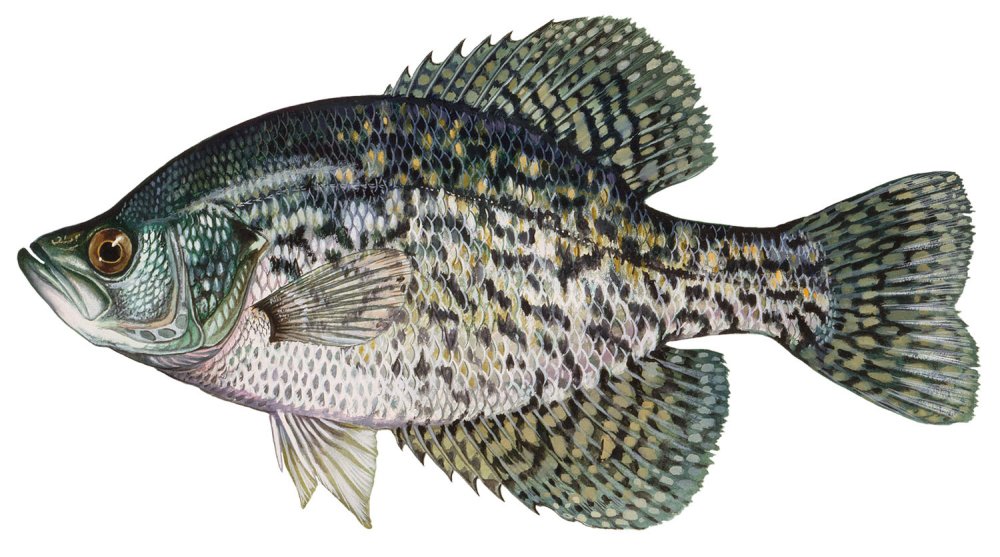
Crappies are fun to fish for – seems they’ll hit just about anything. They also do well in an aquarium, where they are not aggressive towards anything they do not regard as food. They do require live food like minnows, although eventually you can train most individuals to take freeze-dried krill and worms.
